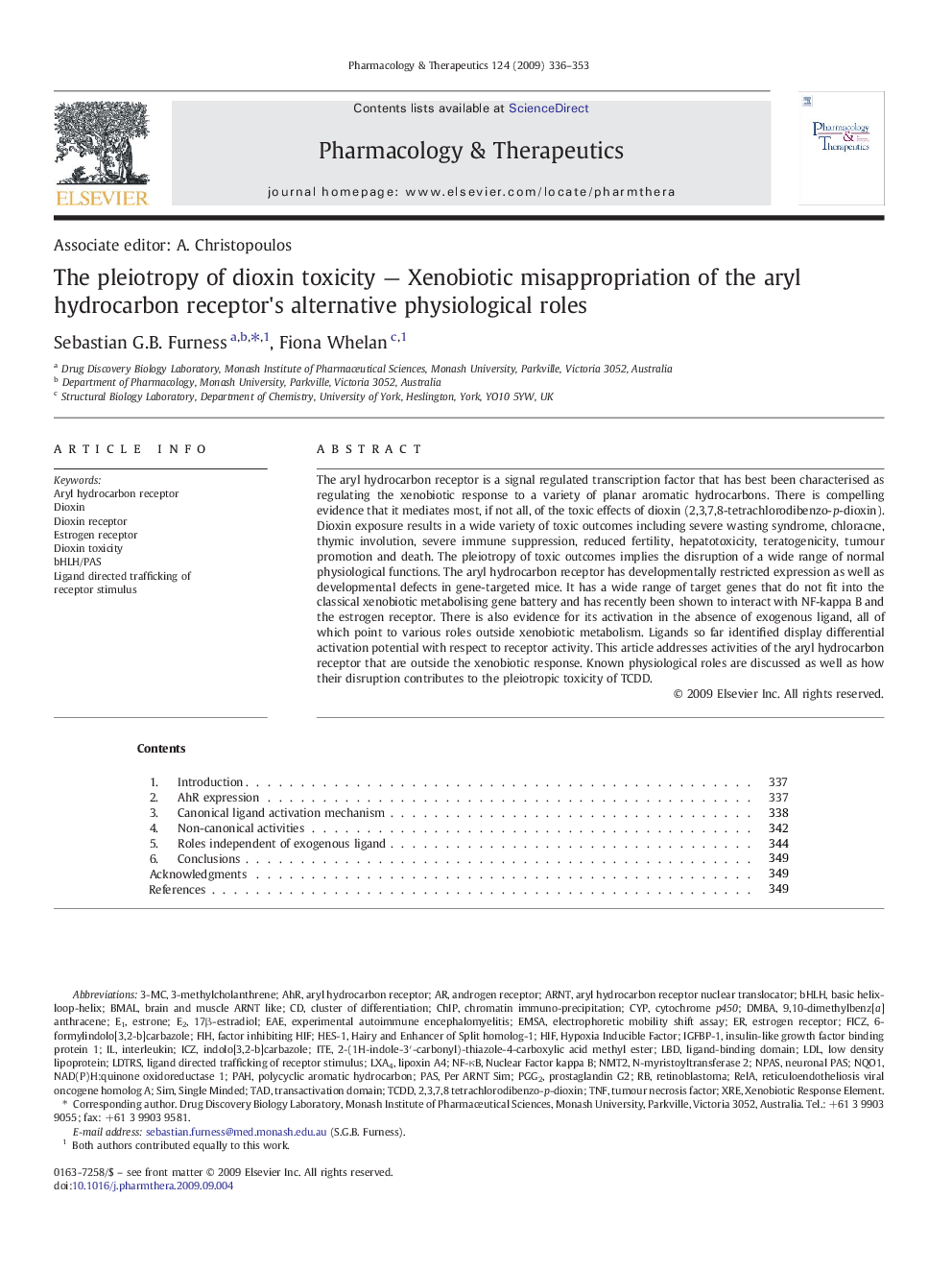| کد مقاله | کد نشریه | سال انتشار | مقاله انگلیسی | نسخه تمام متن |
|---|---|---|---|---|
| 2563559 | 1127542 | 2009 | 18 صفحه PDF | دانلود رایگان |

The aryl hydrocarbon receptor is a signal regulated transcription factor that has best been characterised as regulating the xenobiotic response to a variety of planar aromatic hydrocarbons. There is compelling evidence that it mediates most, if not all, of the toxic effects of dioxin (2,3,7,8-tetrachlorodibenzo-p-dioxin). Dioxin exposure results in a wide variety of toxic outcomes including severe wasting syndrome, chloracne, thymic involution, severe immune suppression, reduced fertility, hepatotoxicity, teratogenicity, tumour promotion and death. The pleiotropy of toxic outcomes implies the disruption of a wide range of normal physiological functions. The aryl hydrocarbon receptor has developmentally restricted expression as well as developmental defects in gene-targeted mice. It has a wide range of target genes that do not fit into the classical xenobiotic metabolising gene battery and has recently been shown to interact with NF-kappa B and the estrogen receptor. There is also evidence for its activation in the absence of exogenous ligand, all of which point to various roles outside xenobiotic metabolism. Ligands so far identified display differential activation potential with respect to receptor activity. This article addresses activities of the aryl hydrocarbon receptor that are outside the xenobiotic response. Known physiological roles are discussed as well as how their disruption contributes to the pleiotropic toxicity of TCDD.
Journal: Pharmacology & Therapeutics - Volume 124, Issue 3, December 2009, Pages 336–353